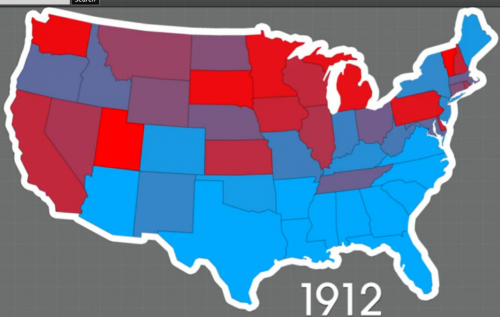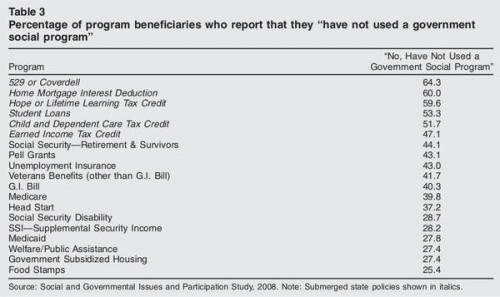Last week a secretly-taped video of Romney made headlines. In it, he said that 47% of America believes that they are “victims,” is “dependent” on the government, and likes it that way. SocImages, like many places around the web, did some talking about who the 47% of people who pay no income taxes really are.
In this post, however, I’d like to make a different kind of point about framing and the sociological imagination, inspired by Ill Doctrine‘s Jay Smooth and Slate’s William Saletan.
Reacting to the release of the video, the media returned to a similarly clandestine video of Obama that had made the rounds during his first run for the presidency. In it, Obama refers to Americans who are “bitter” and “cling to guns or religion, or antipathy toward people who aren’t like them, or anti-immigrant sentiment…” So, six-of-one, half-dozen-of-the-other right? Both statements are equally tone deaf and biased right?
No. In fact, one is embedded in a deep empathy and an understanding that circumstance (i.e., that thing that sociologists study) can shape one’s outlook, sometimes in negative ways. The other is a straightforward criticism of a group’s character, with a lack of empathy and understanding.
Let’s take a closer look at how Obama introduced his (fairly criticized) comment about the bitter clinging to guns (transcript). He begins by saying that people have a good reason to be unhappy with politicians:
In a lot of these communities in big industrial states like Ohio and Pennsylvania, people have been beaten down so long, they feel so betrayed by government, that when they hear a pitch that is premised on not being cynical about government, there’s a part of them that just doesn’t buy it…
Then, instead of writing off these people as bad people who will never vote for the right guy, Obama argues that he wants to reach them (calling it a “challenge”), further validating how they might feel given the circumstances of their lives:
…our challenge is to get people persuaded that we can make progress when there’s no evidence of that in their daily lives. You go into some of these small towns in Pennsylvania, Ohio — like a lot of small towns in the Midwest, the jobs have been gone now for 25 years, and nothing’s replaced them. And they fell through the Clinton administration and the Bush administration. And each successive administration has said that somehow these communities are going to regenerate. And they have not. So it’s not surprising then that they get bitter, and they cling to guns or religion, or antipathy toward people who aren’t like them, or anti-immigrant sentiment, or, you know, anti-trade sentiment [as] a way to explain their frustrations.
In contrast, Romney’s comments are dismissive and accusing (transcript). His targets — the 47% of people who are exempt from paying income taxes — aren’t embattled, fighting for a decent life despite political neglect, they’re “entitled” to something they haven’t earned. They’re happy to be dependent on the government and don’t want it any other way. They’re leeches, parasites, freeloaders, bums.
And, instead of saying that its his job to help those people see life a different way, Romney dismisses them entirely:
[They’ll] vote for the [current] president no matter what… my job is not to worry about those people — I’ll never convince them that they should take personal responsibility and care for their lives…
So, while some are arguing that Romney’s comments are just a politically-right version of Obama’s — equally biased and cynical — nothing could be farther from the truth. Obama looks at Americans who will not likely vote for him and sees social structural reasons that their negative emotions are valid (even when they’re aimed at him), he expresses empathy for their plight, and seeks to connect with them. Romney does nothing of the sort. Instead, he condemns them as individuals and blows them off as potential constituents; and he encourages others to do the same.
In short, Obama has a sociological imagination that enables, even presses him to see the bigger picture. He sees both individuals and the circumstances they live in. Romney, for whatever reason, does not exercise a similar imagination.
Wanna hear it straight from Jay? I would too:
Lisa Wade, PhD is an Associate Professor at Tulane University. She is the author of American Hookup, a book about college sexual culture; a textbook about gender; and a forthcoming introductory text: Terrible Magnificent Sociology. You can follow her on Twitter and Instagram.


















